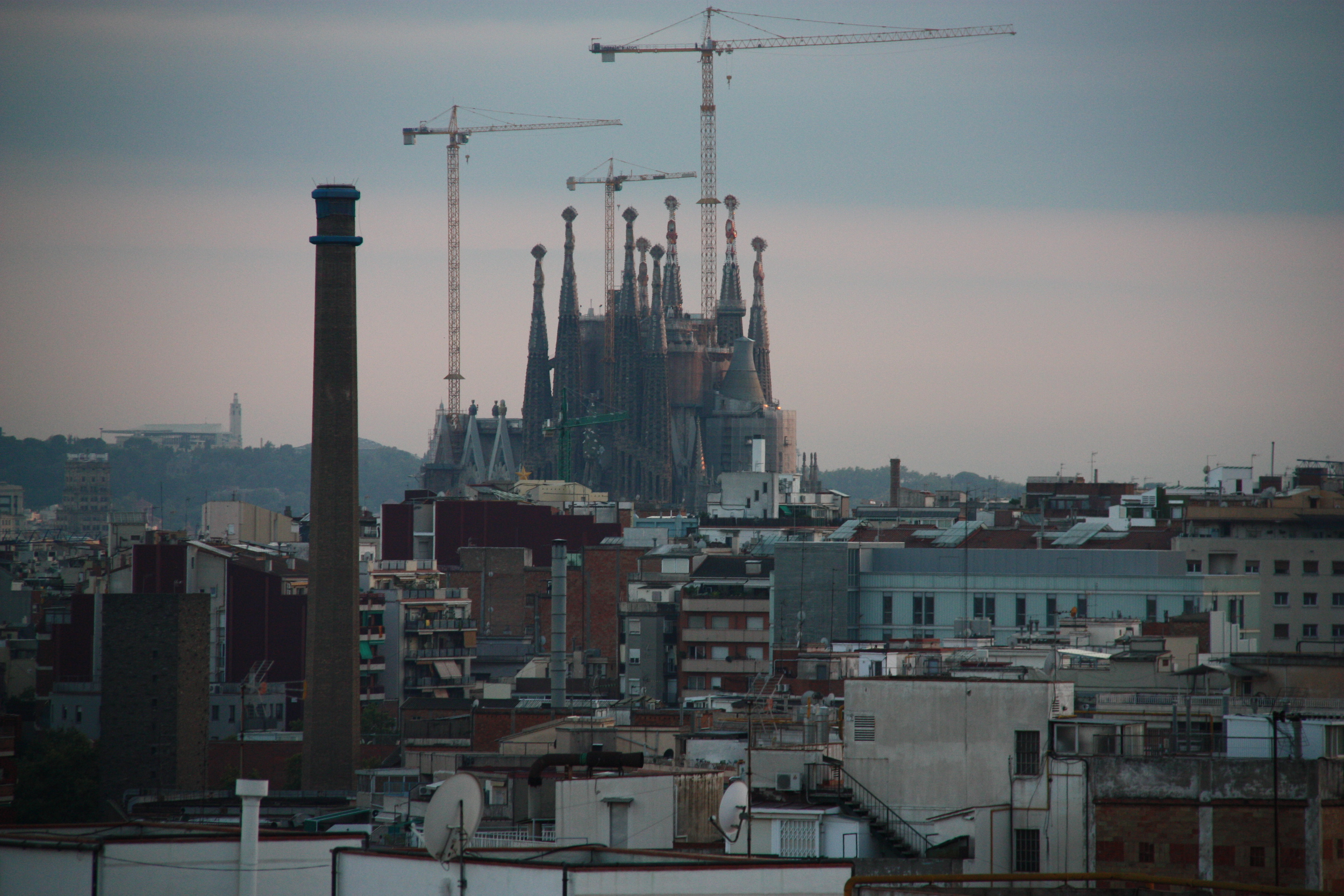Sagrada Família could be forced to pay taxes, after over a century of unlicensed building
The Sagrada Família is one of the most emblematic, but also one of the most polemic, buildings in Barcelona. With up to 10,000 visitors per day, more than 3 million every year, the most iconic building by Antoni Gaudí is a nightmare for neighbours, who have to deal with congestion in their streets and are afraid that the temple construction works may be expanded beyond the current enclosure. Recently, though, a new controversy has also arisen. After more than a century under construction, Barcelona City Hall has announced that it will request the basilica board to pay taxes and have a building permit, which it does not currently possess. According to the estimations, this licence will demand €840,000 of the Barcelona Archbishop, €8.4 million by 2026, the year in which the works are supposed to be completed.

Barcelona (CNA).- The Sagrada Familia Basilica is Barcelona’s tourist attraction par excellence. Last year the most famous building by Antoni Gaudí received 3.7 million visitors – up to 10,000 per day. The church, under construction for 134 years now, is deemed a work of genius, although it has not been exempt from controversy. The rising tide of tourists visiting the city cultural landmark has irritated neighbours, who have to deal with congestion in their streets. To add more fuel to the fire, a new polemic issue has arisen. The temple does not pay taxes to the city. The construction process started in March 1882 and in all these years the basilica has never had a building permit and, what is more, no mayor has demanded it, until now. The city’s mayor, Ada Colau, has announced her plans to meet with the basilica board to reverse this hundred-and-thirty-four-year-old situation.
The Barcelona council believes that the Sagrada Família must pay taxes, as do any other citizens wishing to throw up a wall or expand their building. With this in mind, it has announced a meeting with the basilica board to tackle the lack of licence. "It is normal to talk about a situation that has lasted for more than 100 years and therefore is, at some point, worth treating”, stated the City Hall, which added that the continuation of the construction works is not at risk and explained that they want to address this situation “without a rush and with a willingness to agree”.
The Deputy Mayor for Urban Planning, Janet Sanz, acknowledged that it is a "complex issue". "What we want is to clarify at some point how they are developing this work and we have to make concrete whether this (lack of permit) refers to previous times and from when do we start counting”, the politician added.
The building permit could cost €840,000 per year
On the amount to be paid by the Archbishop of Barcelona, two types of fee must be distinguished. The first one is the tax on constructions, installations and works that measures the amount to be paid by applying a 3.32% levy on the total cost of the construction work. This would have cost the diocese zero because the church is exempt from paying this tax as it is also exempt from paying the property tax (IBI) – thanks to this regulation the Archbishop saves around €927,000 per year.
However, what does affect the Sagrada Família is the building licence, a municipal tax measured in square metres of work. According to the regulations of Barcelona, the amount is 4.96 euros per square metre. Hence, in accordance to the estimations, the Archbishop will have to pay approximately €840,000 every year, €8.4 million by the time the basilica reaches completion in 2026.
According to Sagrada Família sources, the temple has in its possession a permit of the Sant Marti de Provençals City Hall under Antoni Gaudí’s name that dates from 1885. In the case of remodelling affecting public road, the board have always asked permission to conduct it.
Sagrada Família, a garish and invasive work?
The tensions around the Sagrada Família have increased sharply following last week’s statement from the Councillor of Architecture of Barcelona, Daniel Midol. The politician referred to the Basilica as a “pseudo-work” of Gaudí, “a large farce” and a “kind of gigantic Easter cake”.
In this vein, the construction committee of the basilica stressed that the works can be finished without having any effects beyond the space it already covers. The completion of the church is planned for 2026 “with the construction of everything required inside the enclosure”, they stated.
The Construction Board of the basilica explained in a communiqué that the foundations of the Glory facade, on Mallorca street, have already been laid and, therefore, "it is not necessary to add anything to advance the construction and finish the temple”. "There are eight pillars built, so the facade will be finished", they said.
The Construction Board also stated that the priority is to build the Sagrada Família according to Gaudí’s designs and reiterated that the construction follows "scrupulously" the guidelines the artist left "written, drawn or in models".
Tensions between tourists and neighbours
The iconic building by Gaudí receives up to 10,000 visitors per day. This tide of tourists inundates the streets and causes congestion, the local neighbourhood association has said on numerous occasions.
The Sagrada Família has capacity for 2,000 people simultaneously, spread over all its areas. The board of the basilica has recalled that the capacity is “controlled” and stated that they are working to “mitigate incidents that may occur and create good conditions of cohabitation” between visitors and neighbours. The basilica committee stressed that the inconveniences caused by tourism are "slowly diminishing" thanks to the installation of lockers inside the temple and due to the increasing online sale of tickets.